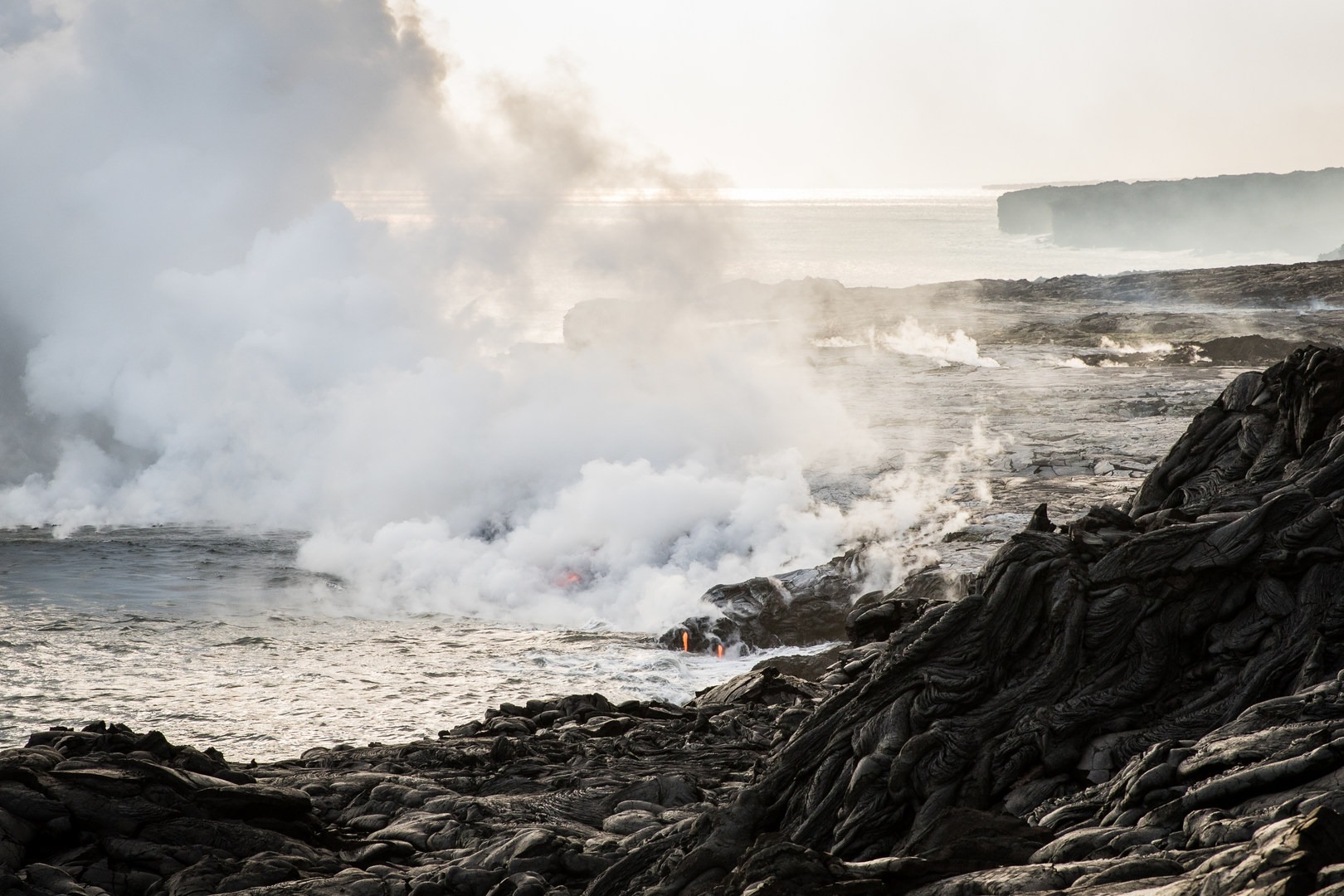You are here
Many visitors to Hawai'i Volcanoes National Park are justifiably interested in seeing an active lava flow, but in reality this can be a difficult objective. Pele, the goddess of volcanoes, does not bend to the whim of humans, and sometimes there is simply very little or no activity to be observed. Additionally, while lava is transfixing to watch, it is also incredibly dangerous...a fact that may seem obvious until you read about the kinds of accidents that over-eager visitors have had in the park. There are the hazards of contact, of course, but also the very real concerns regarding sulfur dioxide concentrations in the air. The National Park Service attempts to facilitate a visitor experience while balancing these concerns, and as a result, the opportunities to see lava are, as of 2017, two: Visitors can head to the Jaggar Museum for views into Halema'uma'a Crater in the Kīlauea Caldera, or, Pele willing, they can try to find where a flow is pouring into the Pacific Ocean off of the closed section of Chain of Craters Road.
It must be emphasized that this flow comes and goes, and it also moves. In 1983 Pu'u' Ō'ō, a volcanic cone north of Chain of Craters Road and southeast of the Kīlauea Caldera, began an eruptive process that continues to this day. The eruptions have at times been incredibly destructive. Aside from the frequent burials of Chain of Craters Road, lava flow destroyed the towns of Kalapana and Kaimū in 1990. In other periods the flows will stop completely; collapsed tubes may force lava to reroute, the lava pond near the cone may settle, or earthquakes may case a larger subsidence. For the latest information about active lava flows, always stop in at the visitor center before heading out.
For this adventure, begin where the Chain of Craters Road ends. You're in for nearly 4 miles of walking along the gravel road with no shade, no water, and one stop with portable toilets. This section of the hike can feel monotonous, but the lava formations by the side of the road create wonderful distractions. Once you've reached the end of this section you'll find the road is again roped off, and this is marks the beginning of the mile-long traverse over the uneven, hot, steamy lava field toward the established viewpoint. Hiking this section is unreal; jagged, barren, toxic, smelly...it is enthralling to hop and struggle through such a hostile environment. In addition to the solar heat the radiates of of the black lava, you'll likely come across hot spots where the crust is still conducting heat from activity below. Walk carefully, and make sure you are wearing sturdy shoes! If you only have sandals, you may seriously want to consider skipping this hike.
There are several hundred yards between the sanctioned viewing spot and the flow itself, so you'll want to bring your telephoto lens with you. And while you may not be able to get as close to the lava as you'd like, the power of this place is really much more encompassing. The sea, the piping fresh landscape, the sunlight streaming through the yellow miasma, and the sound of the waves all add up to a moving experience watching some of the newest land on Earth.
An alternative exists for those unwilling or less inclined to make the hike. It is possible to approach Chain of Craters Road from the east side. Here the road ends much farther from the current lava flow (approximately 3.5 miles), but this entrance is closer to bike rental options in the surrounding communities. Biking in is easy along the road, and it can be a great option for families, although it is imperative to heed warnings about air quality with young children. If you are attempting to see this area by night, biking in is a much safer option than stumbling across the lava flow with a head lamp.
Logistics + Planning
Current Weather: Powered by Dark Sky






























Comments
Sign In and share them.